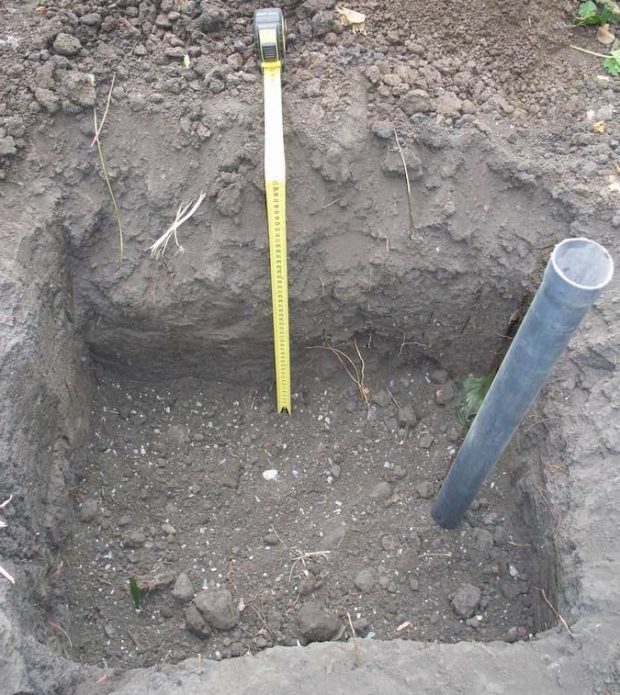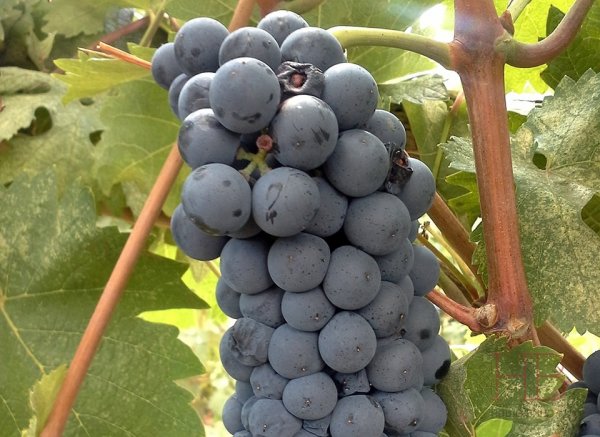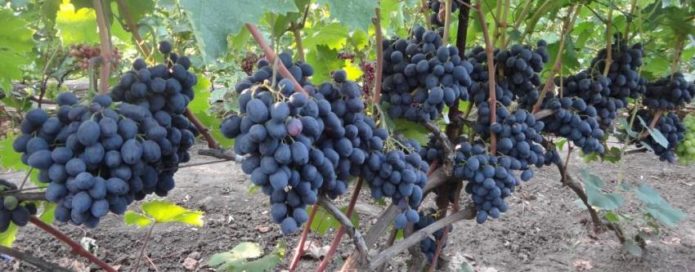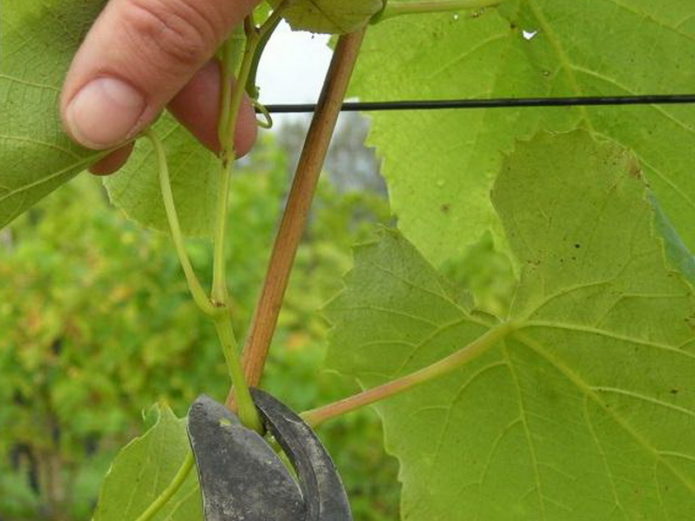For several decades in a row, vineyards have been slowly moving north. This happens thanks to breeders who create frost-resistant varieties. It is not always possible to combine high resistance to cold weather with excellent quality of the crop, but if this happens, the variety gains recognition. One of these varieties is Ruslan grapes of Ukrainian origin.
Content
Breeding history, description and characteristics of the Ruslan grape variety
Ruslan grapes were bred not so long ago, but many experts managed to properly appreciate and love it. This variety is just beginning its promotion to the market, but has already settled in the gardens of various regions of our country.
Origin of the variety
It so happens that many grape varieties were bred not by professional agricultural scientists, but by amateur breeders. To some extent, this also applies to the Ruslan variety obtained in the city of Zaporozhye. Its author V.V. Zagorulko is a mechanical engineer by profession, but devoted most of his life to viticulture. There are many popular varieties in the list of its varieties, in demand both by summer residents and large farmers. He tries to breed table varieties that are self-fertile, yielding delicious, beautiful berries that tolerate transportation well.
Ruslan was obtained on the basis of well-known varieties: Kuban and Gift to Zaporizhzhia... This is a large-fruited variety that has not yet been fully studied, but is rapidly advancing not only in the regions of Ukraine, but also in neighboring Russia and Belarus, as well as Kazakhstan. V.V. Zagorulko often takes part in various exhibitions. So, at one of them, held in the Crimea, a new variety received its first recognition.
Description of Ruslan grapes
Ruslan berries are obtained on large bushes characterized by high vigor of young shoots and their good ripeness during the growing season. Despite the fact that in the case of a bountiful harvest, about a third of the shoots from the top do not completely wood, this does not prevent the bushes from producing a large number of fruits annually: each shoot normally withstands a load of up to three bunches; berries have time to germinate and ripen even on stepsons. The foliage of the bushes is abundant, the leaves are large, the shape is poorly cut.
Grapes are considered frost-hardy, although by this indicator they are far from being a champion: the absolute majority of modern varieties withstand frosts from -20 aboutFrom to -24 aboutS: Ruslan also falls into this category. Therefore, it does not need to be covered for the winter only in the southern regions. But he easily tolerates strong fluctuations in the temperature background during the growing season, when hot weather can be replaced by cold snaps, or even slight frosts. The flowers of this variety are bisexual, that is, the grapes are self-fertile and do not require the presence of another variety of bushes in the neighborhood, which would serve as pollinators.
The variety is one of the early ripening varieties. It cannot be called ultra-early, from the moment the buds wake up to harvest, it takes from 3.5 to 4 months, but the first berries in the southern regions ripen by early August, in the central regions - a little later. Among the varieties with blue fruits, Ruslan is one of the first to harvest.
It is worth noting that the berries that have ripened in appearance, which have acquired a characteristic color, are edible, but not yet completely ready: they acquire a real taste and aroma only a few days after they are completely colored.
The bunches of this grape are conical, their size is average or slightly above average: the usual weight is about 700 g, but sometimes the bunches grow up to a kilogram and a little more. The packing of berries in them is of medium friability, the berries are leveled in size, "peas", that is, small nondescript-looking specimens are not observed. The berries themselves are large, weighing from 10 to 20 g, sometimes round in shape, but more often slightly oval. The color is bright blue, with a waxy coating; at the stage of full maturity, they acquire a black tint. The disadvantage is that overripe berries crack in rainy weather. True, they do not rot at the same time, but they greatly spoil the presentation.
First processing and binding of grapes, feeding and frost protection:https://flowers.bigbadmole.com/en/yagody/vinograd/vesennie-rabotyi-s-vinogradom-posle-zimyi.html
To taste, the fruits are sweet and sour: with the common acidity for most varieties (about 6.5 g / l), the sugar content does not exceed 18%. This is not to say that this is not enough, but some people love sweet grapes, then this variety is not for them. In general, the ratio of sugar and acid is so balanced that the berries do not seem sugary, and you can eat a lot of them. The chemical composition is perfectly suited for not only eating fresh fruits, but also putting them on various preparations: compotes, jam, marshmallow. Ruslan is also suitable for winemaking. Some housewives freeze a small part of the harvest in order to enjoy almost fresh grapes in winter.
The flesh of the berries is dense, juicy, contains 2-3 seeds. The skin is thin, it is not felt when eating, but fully ripe berries have a fruity aroma, somewhat reminiscent of a ripe plum. The berries hold well on the bushes, but you should not delay harvesting, especially in rainy weather. They are stored in the refrigerator for several months, they can easily be transported.
Video: ripe grape harvest Ruslan
Features of planting and growing grape varieties Ruslan
Planting and growing these grapes requires basic knowledge and skills: the variety does not require anything unusual. In this regard, it may well be recommended for novice winegrowers.
Landing
Ruslan from the point of view of agricultural technology is a common table variety of covering grapes of early ripening. Therefore, the choice of a landing site is traditional: it must be a sunny area, protected from the action of cold winds. His bushes are large, but they do not require a very large area, and it is enough to leave a distance of one and a half meters or a little more to a neighboring grape bush or other plantings. True, with a more rare planting, the grapes are better blown and less susceptible to diseases. Ruslan can grow on any soil, but prefers fertile, with sufficient humus and peat content, breathable. It will be nice if there is a small hill for Ruslan's landing.
Grape planting technology. Warmth, light and caring hands are all that grapes need in your garden:https://flowers.bigbadmole.com/en/yagody/vinograd/kak-posadit-vinograd-vesnoy-sazhentsami.html
It is better to plant grapes at the end of April or the very beginning of May, but in the south they do it in autumn, until mid-October. A plot of about 3 x 3 meters is dug up in advance, and in the fall a pit is prepared on it for spring planting.It is desirable that its dimensions be at least 80 x 80 x 80 cm. Drainage at the bottom of the pit is required: grapes are afraid of stagnant water near the roots, therefore, areas with a high groundwater level are excluded. The drainage is a layer of 10-15 cm of any material such as gravel or pebbles. But, at the same time, for the plant to take root in the first 2-3 years, it is advisable to water it directly into the root zone. Therefore, an irrigation pipe of any material, but of sufficient diameter, is carried out to the bottom of the pit.

A pipe drawn to the bottom of the pit is needed so that water from irrigation flows directly to the roots
A 30-centimeter layer of well-fertilized soil is laid on the drainage layer (adding 2 buckets of rotted manure and about 500 g of complete mineral fertilizer, as well as a liter can of wood ash). Then there is a layer of pure fertile soil: only with it young roots of the seedling will have to contact.
Fresh manure when planting grapes is strictly not allowed!
When planting in April, the seedling is well soaked in water and planted deeply, leaving only two buds on the surface. Watered with several buckets of water and mulch the soil around the seedling, preferably with peat. At first, it is necessary to water the seedling often, each time loosening the soil and restoring the mulching layer. It is also advisable to build a support immediately during planting: for the first year, a peg will be enough to tie up the growing shoot, and then a strong trellis will be required.
Care
Taking care of the grapes is not too difficult. It consists of periodic watering (however, they are obligatory only during the intensive growth of berries, and also, in the case of dry autumn, before the bushes are sheltered for the winter), top dressing, preventive spraying, timely garter of shoots and competent pruning. Top dressing increases the yield significantly, but they should not be excessive. The main application of fertilizers in early spring is carried out every two years (2-3 buckets of humus in small pits along the periphery of the bush). Every spring, wood ash (several liters) is scattered around the bush, slightly embedding it in the soil. Foliar dressing by spraying leaves with weak solutions of mineral fertilizers is possible before flowering and at the beginning of fruit setting.
Preventive spraying of vines for diseases is carried out immediately after the opening of the bushes after winter, using iron or copper sulfate. If time is lost and the buds are swollen, it is better to use Bordeaux liquid, and when pushing the leaves - the drug Ridomil Gold. The variety is characterized as disease-resistant, but it does not feel well in excessive moisture. And in damp years, any grapes are more or less susceptible to mildew infection, so Ruslan's condition during rainy seasons must be closely monitored.
Iron vitriol is one of the traditional chemicals used in horticulture. Due to its versatile properties and low toxicity, it is widely used by winegrowers as a fungicide and fertilizer:https://flowers.bigbadmole.com/en/yagody/vinograd/obrabotka-vinograda-zheleznyim-kuporosom.html

Bordeaux mixture should always be in the arsenal of the grower: it is a simple but reliable fungicide
Unfortunately, the degree of resistance of the variety to phylloxera has not been fully studied, but there is information that it is very vulnerable to this pest. This once again indicates that spring spraying is necessary. A small insect - phylloxera - affects all parts of the plant, but hibernates on the roots, therefore, for preventive purposes, it is useful not only to spray the bushes with copper sulfate in early spring, but also to treat the loosened soil around the base of the bush with this solution.
The variety is almost not attacked by wasps, but various birds like to peck it, especially if at least some of the berries on the bushes are cracked. Therefore, experienced growers often protect the ripening crop with various nets, placing individual bunches in them or covering the entire bush with huge nets.
Light pruning is also possible in spring, but only long before the start of the growing season. At this time, it is worth cutting out only dead vines and obviously unnecessary ones, which for some reason were left behind in the fall. Summer green operations remove a lot of problems: it is better to break out the shoots that grow in an unnecessary place right away, before they have grown. In the summer, they also struggle with extra stepsons. In the summer, immediately after flowering, extra bunches are also broken out: to obtain a high-quality harvest, no more than two copies should be left on each shoot. And after leaf fall, when the entire bush is clearly visible, they carry out a thorough pruning.
In the fall, young shoots are shortened, at least to mature wood: everything that has not become stiff will not overwinter anyway. In addition, a bush is formed. Depending on its age, pruning is carried out more or less short: it is important that the entire bush contains no more than 35 eyes, and the length of each shoot left depends on their total number.
Shelter Ruslan for the winter is mandatory, except for the very southern regions. Light cover is sufficient in most areas. The vines are untied from the trellises, laid out on the ground and tied in bunches. The easiest way is to cover them with spruce branches of coniferous trees, not forgetting to spread the poison against mice nearby. Nonwovens can also be used. Snow will serve as the main shelter from frost.
Video: tips for growing grapes Ruslan
Advantages and disadvantages in comparison with similar varieties
It is difficult to find a variety that is the same as Ruslan in the whole set of characteristics in order to make a correct comparison. There are not so many large-fruited varieties with blue berries, but so that they also ripen early ... Therefore, it is inappropriate to compare the variety, for example, with the blue-fruited group of Far Eastern grapes: Ruslan wins both in early maturity and in the size of berries. And considering such an indicator as the harvest time, of course, it should be said that it is by no means a record holder, but, perhaps, among the early maturing varieties, only it gives fruits of this color. Although, of course, all this is for an amateur.
Weighing all the pros and cons of planting Ruslan grapes in their area, almost any grower will make a positive decision, since this variety has a lot of advantages. The most important of them are as follows:
- sufficiently high frost resistance;
- easy care;
- ease of propagation by cuttings;
- early maturation;
- buncation of flowers;
- high productivity and large-fruited;
- good preservation and transportability of the crop;
- universality of appointment;
- good disease resistance and resistance to wasps;
- original taste and aroma of berries.
The obvious disadvantages include:
- cracking of ripe berries in high humidity conditions;
- susceptibility to eating by birds;
- possibly phylloxera instability.
The general ratio of the number of positive and negative qualities allows us to recommend Ruslan grapes to both experienced and novice winegrowers living in most climatic zones of our country.
Video: Ruslan grapes as an industrial variety
Reviews
I have the Ruslan variety for two years. In the second year after planting, in 2011, he left 12 bunches. Well, they can be called bunches with a stretch, the weight of individual bunches reached 650 grams, I really hoped that the bunches would be much larger, for the reason that they participated in the selection (Kuban x Gift to Zaporozhye). This parental couple participated in the selection of the Furshetny variety, so at the first fruiting, the bunches were more than a kilogram. Ruslan variety of early ripening, I have ripened by August 12, if with full load, you can add 5-7 days. The bunches, as mentioned above, are still medium in size, but the berries are ..., dark blue, with a strong prune, plum-shaped, without peas, the weight of the berries is about 18 grams. The taste is harmonious, with a slight plum flavor. I left a couple of bunches on the bush after full ripening, did not observe cracking of the berries.Like Furshetny, the Ruslan variety is not bad for disease resistance, slightly lower than the Gift to Zaporozhye. The variety is very tall, the vine ripens well, I want to note the high rooting rate of cuttings. I think that it is too early to draw final conclusions about this variety, but I think that V.V. Zagorulko. smiled luck in breeding varieties with a dark berry, luck behind which is hard and painstaking work.
I personally really like Ruslan, although it is not so common and it cannot be said that it has been tested for many years in many areas, but I would recommend it to everyone, including for growing in "cold" regions. The form captivates with its stability, its taste from the Kuban is obvious, and maybe even surpasses it, although there is no nutmeg, but some interesting fruit notes are felt. Here it also ripens around August 1–5. In 2013, the bush suffered during wintering (like many others), recovered, showed several clusters.
Today we tasted Ruslan's signaling with great pleasure. Everyone liked the taste very much. The flesh of the berry is firm, fleshy juicy, bites with a crunch, as many here write, it tastes something vaguely plum and very pleasant. The bush was planted last year with a rooted cuttings, this year there were three small signals. The size and shape of the berry is similar to a plum, you put it next to it and cannot be distinguished. For some reason, several berries in the bunch remained unpainted and unripe. During heavy rains, several pieces cracked, the wasps began to try, they had to shove them into bags. In the spring, my bush was chlorosized a little, but after treatment with iron chelate, it turned green. The strength of growth is great, it still throws out inflorescences on the stepsons. So far, I am very pleased with this form.
Ruslan grapes, like any variety, are not without flaws, and there are no ideal varieties. However, in terms of the totality of its properties, it is one of the most worthy table varieties of early ripening grapes. It has not yet been fully studied, but the reviews of winegrowers who planted and tested Ruslan on their plots testify to the high interest of both amateurs and professionals in it.






1 comment